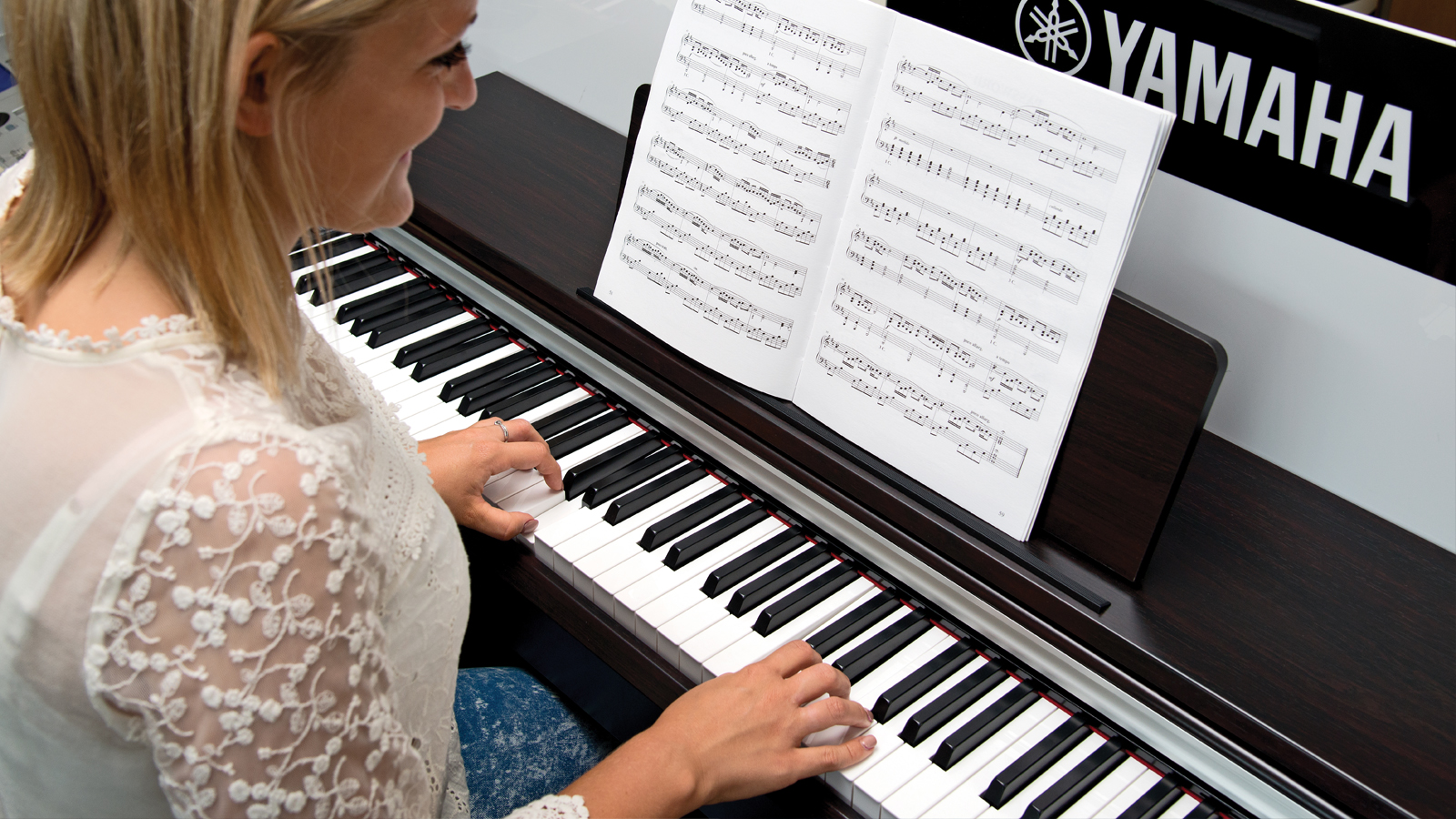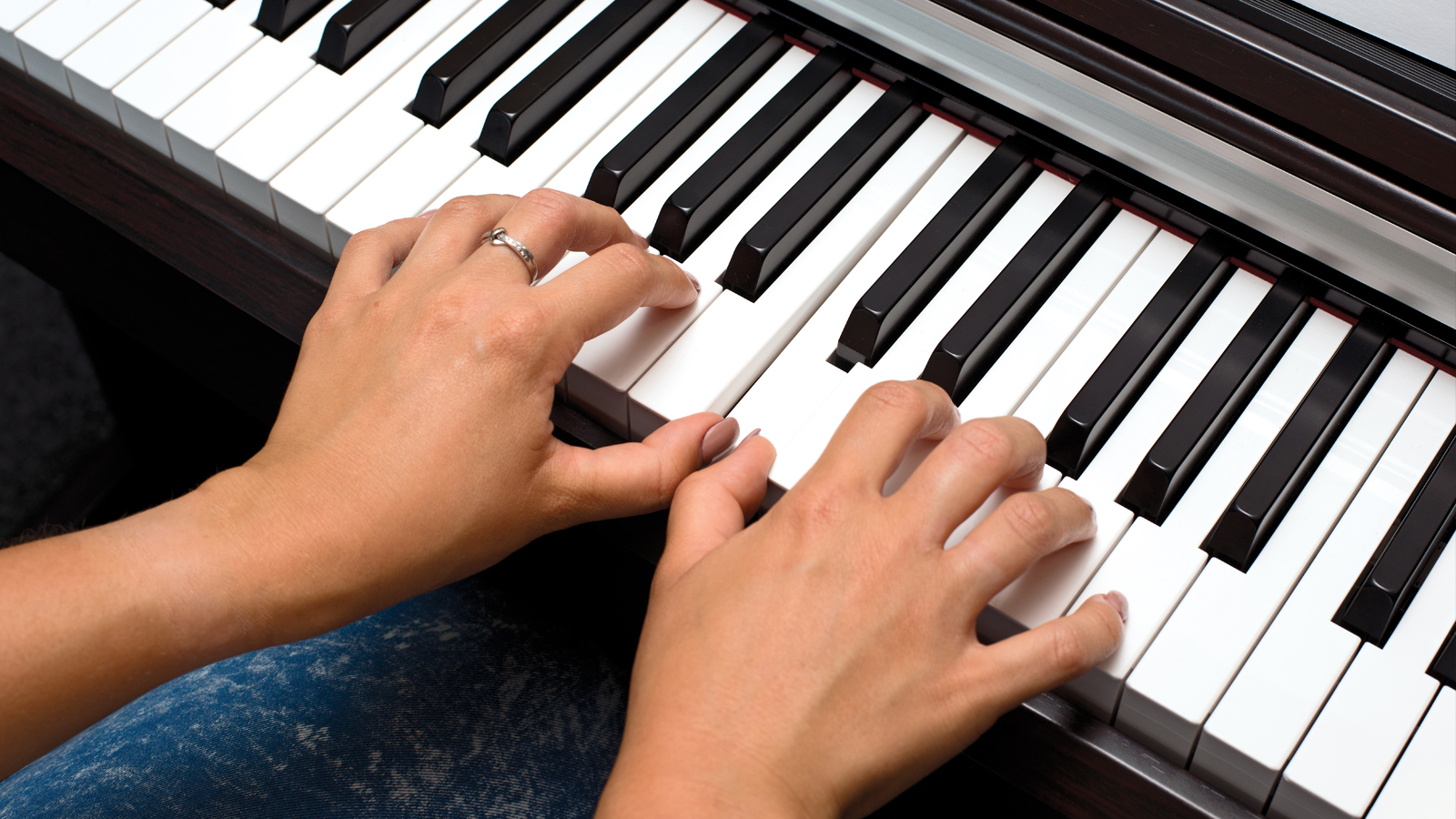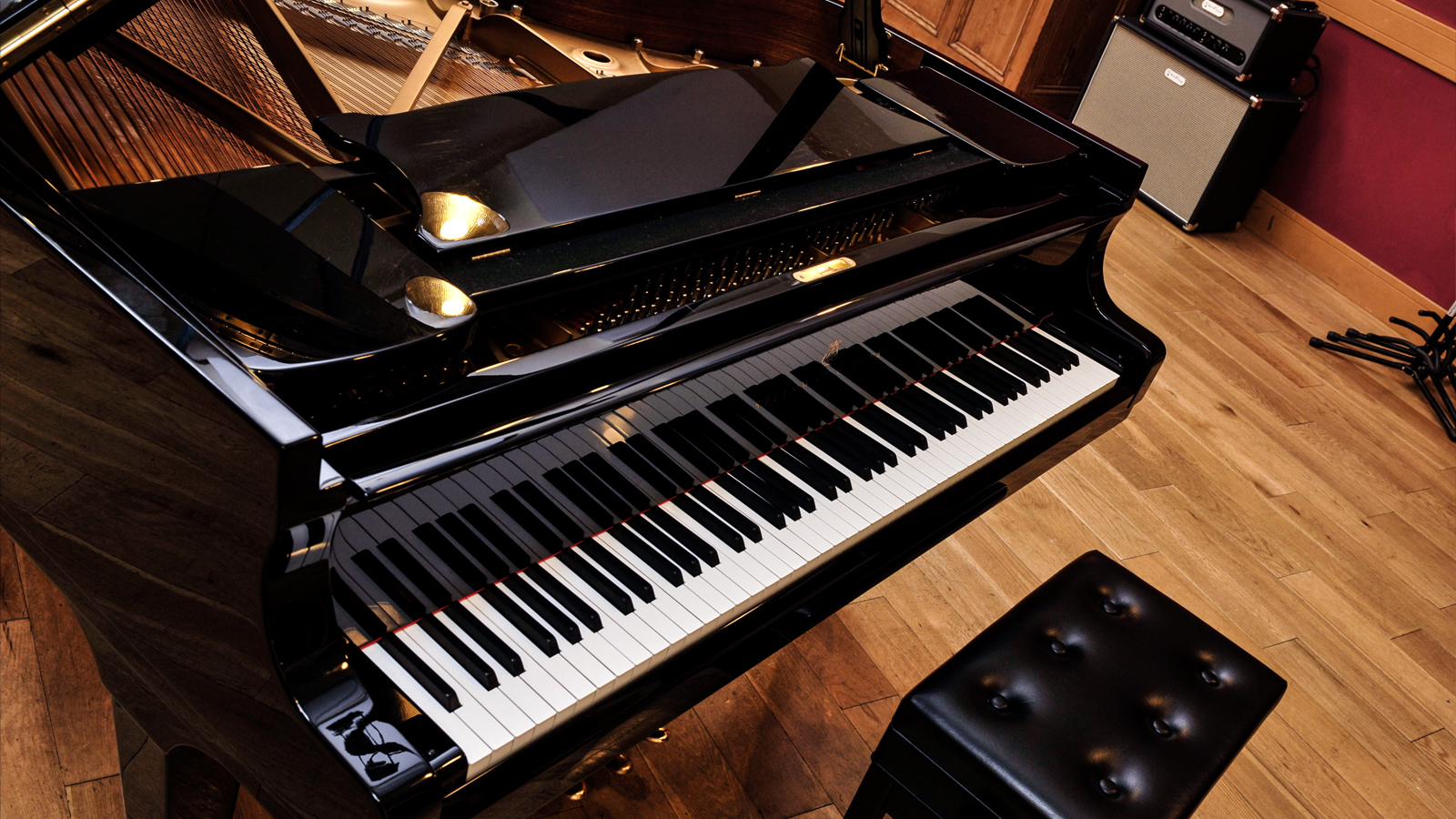Digital pianos jargon buster: all the essential digital piano terms explained
We break down some of the confusing language surrounding the wonderful world of digital pianos

KEYS WEEK 2023: Digital pianos have never been so popular. Many players, new and old, are turning to these hi-tech pianos over the more traditional option, and it's easy to see why. With no need for regular tuning or maintenance, an array of world-class sounds and a style and size to suit every home, the digital piano has quickly become a firm favourite among pianists.
Over the last few decades, the digital piano has become more technologically advanced, incorporating the latest hi-tech solutions to get closer to the acoustic piano's feel, sound and style. Yamaha, Korg, Roland, and Kawai are leading forces in the digital piano space, constantly innovating to make the best instruments they can.
Therefore, it will come as no surprise that a relatively extensive glossary of terms has developed, making it quite intimidating for newbie players to enter this virtual piano world. To make things more accessible to beginner players, we've put together this list of common jargon words and phrases associated with digital pianos with a straightforward explanation of their meaning.
So, if you struggle to get your head around DSP, polyphony and sostenuto, this article is for you.

Daryl is a Senior Deals Writer at MusicRadar, and is responsible for writing and maintaining buyer's guides on the site as well as testing out products for reviews. Before writing for MusicRadar, Daryl worked for many years in music retail, helping musicians of all ages find the best gear for them. Whether it was a beginner's first keyboard or a top-of-the-range digital piano for the pros, Daryl was there to help steer players in the right direction.
Action
The action refers to the mechanism that produces the movement of the keys. The quality of a digital piano's action determines how closely it mimics the feel of an acoustic piano.
Audio Interface
An audio interface is a device that connects a digital piano to a computer or recording equipment to capture audio. Audio interfaces convert the analogue audio signals from the piano to digital signals that can be processed by a computer.
Auto Accompaniment
Auto accompaniment is a function found on several digital pianos and arranger keyboards. It is used to automatically generate a rhythmic backing track using the chords played by the pianist to inform the bass or other instruments.
Want all the hottest music and gear news, reviews, deals, features and more, direct to your inbox? Sign up here.
AWM (Yamaha)
AWM stands for Advanced Wave Memory and is a sampling and tone generation system developed by Yamaha and used in several of their digital pianos and synthesizers.

Black Keys
Like on a traditional acoustic piano, the black keys are used to play sharp and flat notes. The black keys are shorter and narrower than the white keys and can even be made from different materials depending on the piano.
Cabinet
The cabinet is simply the exterior of the digital piano that encloses the speakers and acts as a stand for the keyboard section of the instrument. Cabinets come in various materials, with the two most popular being wood and plastic.
Clavinova
While many players use the term Clavinova to mean any digital piano, it is, in fact, the name given to a very specific series of Yamaha digital pianos.
Damper pedal
The damper pedal is the rightmost pedal on a digital piano and is more commonly referred to as the sustain pedal. Traditionally, pressing down on this pedal lifts the dampers from the strings inside the piano, allowing them to vibrate freely. This creates a sustained sound that continues even after you release the keys. Of course, there are no dampers to lift in a digital piano, so the sustain is created virtually.
Digital Signal Processing (DSP)
DSP is the process of manipulating digital audio signals to create effects or enhancements. DSP can be used to create effects like reverb, chorus, and delay.
Dynamic Range
Dynamic range is simply the difference between the softest and loudest sounds a digital piano can produce. A higher dynamic range means the piano can produce a greater variety of tones and nuances - and the closer to an acoustic piano it will sound.

Escapement
The escapement mechanism found on an acoustic piano ensures that when a key is pressed, the hammer returns back to its original position as quickly as possible. This allows the string to resonate freely. While there is no need for escapement on a digital instrument - as there are no hammers - many will replicate the feel of the mechanism to ensure the piano plays exactly like its acoustic counterpart.
Effects
All digital pianos come with built-in effects. These effects are used to enhance the sound and commonly include reverb, chorus and delay. Effects can be applied to the sound to create a specific ambience or mood.
Equalizer (EQ)
An equalizer is a tool that adjusts the balance of frequencies in a sound to create a desired tone. EQ can be used to boost or cut certain frequencies, helping the user tailor the pianos sound to their exact needs.
Grand Piano
A grand piano is a type of large piano which has the body, strings, and soundboard arranged horizontally and in line with the keys and is supported by three legs. While most grand pianos are acoustic; you can get digital versions from the likes of Yamaha and Kawai.
Hammer Action
The hammer action is a mechanism in a digital piano that simulates the feel of a real piano's hammers. Hammer action gives a digital piano a more realistic feel and touch.
Headphone Jack
This is an output that allows you to listen to your digital piano through headphones. Headphone jacks are usually located on the front or back of the piano and are one of the biggest benefits of owning a digital piano over an acoustic instrument. Check our pick of the best digital piano headphones with a focus on audio performance and comfort.

Ivory Feel
Traditionally piano keys were made of ivory, and although that is no longer the case, it is common to see "ivory feel" keys on their digital counterparts. As the name suggests, ivory feel keys are a type of material that simulates the tactile nature of ivory. These keys are usually made of plastic that is textured to feel like the real deal.
Keybed
The term keybed is often used to refer to the area on a digital piano where the keys are located or even the piano's entire action. In reality, the keybed is a rail or barrier that dictates the furthest travel possible for the keys. On a digital piano, the keybed can be made of wood or plastic.
MIDI
The term MIDI stands for Musical Instrument Digital Interface. A protocol that allows digital instruments to communicate with each other and computers. MIDI is used to transfer information about notes, velocity, and other parameters between devices - most commonly between a digital piano and a computer running recording software.
Metronome
Most - if not all - digital pianos will include a tool that provides a steady beat to help you practice your timing; this is known as a metronome. The metronomes can be set to different tempos and time signatures. If your piano doesn't include this feature, you can buy a stand-alone device - we've ranked the best metronomes to help you select the right one for your needs.
Multitimbral
Multitimbral refers to the ability of a digital piano to play multiple sounds simultaneously. Multitimbral pianos can produce a wide range of sounds and textures, such as layering strings over the piano chords or even percussion.

Octave
An octave is a range of eight notes in a musical scale. The distance between two notes that are an octave apart is twice the frequency and results in the same note, but higher.
Polyphony
The term polyphony refers to the number of notes a digital piano can produce simultaneously. A higher polyphony means more notes can be played at the same time without cutting off earlier notes.
Resonance
Resonance refers to the sympathetic vibrations that occur in the strings and soundboard of an acoustic piano when certain notes are played. Digital pianos can simulate this effect to create a more realistic sound.
Sample
The term sample refers to a digital recording of a sound that is used to create the tone of a digital piano. These samples are often taken from real acoustic pianos.
Sample Rate
The sample rate is the number of times per second that a digital audio signal is sampled. The higher the sample rate, the more accurate the digital recording will be.
Soundbank
The soundbank is a collection of pre-set digital piano tones. Soundbanks can include different types of pianos, strings, organs, and other instruments.
Sostenuto pedal
The sostenuto pedal sits in the middle of the other two and is used to sustain certain notes. This pedal sustains only the notes that are being held down at the exact moment the pedal is pressed, allowing you to then play new unsustained notes over the original sustained ones.
Split Keyboard (dual mode)
This feature is found on most digital pianos and keyboards and allows the keyboard to be split into two sections, each with a different tone. For example, the left-hand section may have a bass guitar voice, while the right-hand section has a piano tone.

Touch Sensitivity
Touch Sensitivity is the ability of a digital piano to detect how hard or soft a key is pressed. Also referred to as velocity-sensitive keys, this feature allows for greater expressiveness and control over the sound and aids in the digital piano feeling and sounding more like an acoustic piano.
Una Corda Pedal
This Una Corda - often called the soft pedal - is the leftmost pedal, and when pressed, creates a more muted sound. In a traditional piano, this is achieved by shifting the position of the hammers inside so they only strike one or two strings per key instead of the usual three. In a digital piano, this is done virtually.
USB
USB stands for Universal Serial Bus. A type of port that allows digital pianos to connect to computers or other devices. USB can be used for data transfer - such as MIDI - or in some cases, even power the piano.
Velocity
The term velocity refers to the speed and force with which a key is pressed on a digital piano. Velocity affects the volume and tone of the sound produced.
Voices
Voice is simply another term for the tones or sounds that are built into the digital piano. Voices can refer to specific instrument sounds or combinations of tones.
Volume
As you'd expect, volume refers to the loudness or softness of a digital piano sound. The beauty of a digital piano is that the volume can be adjusted using the piano's controls, meaning you can practice without disturbing everyone else in the house.
White Keys
The white keys are longer and wider than the black keys and are used to play natural notes.
XLR
XLR is a type of connector used for balanced audio signals. XLR connectors are used for professional audio equipment and are most commonly found on microphones, but they can be found on the rear of a digital piano as a direct output for plugging the piano into a PA system.
Looking for more piano advice? Check out our handy piano guides and features below
- Digital piano FAQ: we answer common digital piano queries
- Digital piano vs acoustic piano: what’s the difference?
- Should you order a piano online? Here are the benefits of buying online
- The best online piano lessons: top software, apps and websites
- Don't forget about these essential piano accessories
- Sit comfortably with one of the best piano benches

I'm a Senior Deals Writer at MusicRadar, and I'm responsible for writing and maintaining buyer's guides on the site. As part of my role, I also scour the internet for the best deals I can find on gear and get hands-on with the products for reviews. My gear reviews have been published in prominent publications, including Total Guitar, Guitarist, and Future Music, as well as Guitar World.com. I've also had the privilege of interviewing everyone from Slash to Yungblud, as well as members of Sum 41, Foo Fighters, The Offspring, and many more.
In a previous life, I worked in music retail, selling everything from digital pianos to electric guitars. I'm also a fully qualified sound engineer who holds a first-class Bachelor's degree in Creative Sound Production from the University of Abertay.